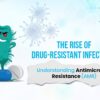In your 20s, the body feels invincible. Even in your early 30s, small discomforts are often brushed off. But once you cross 35, internal health starts shifting quietly. The changes are not always dramatic, but they are real and measurable.
This is the phase when a lot of people still feel healthy on the outside, but early signs of chronic illnesses may already be taking shape inside. Most of them don’t show symptoms until significant damage is done. That’s why preventive care in the mid-30s is more than a recommendation, it’s a responsibility.
Routine blood tests and health screenings in this phase of life help identify silent progressions, things that can be reversed or managed well if caught early.
Below are some of the most important health screenings and why they matter:
Important Health Screenings After Turning 35
1. Complete Blood Count (CBC)
This test gives an overview of red cells, white cells, haemoglobin, haematocrit and platelets.
It can detect:
- Anaemia, which may cause fatigue without clear symptoms
- Infections, even if there is no fever
- Nutrient deficiencies affecting immunity or energy
- Early signs of bone marrow or immune disorders
2. Fasting Blood Sugar (FBS)
FBS measures the glucose level in your blood after 8 to 12 hours of fasting.
Ranges to know:
- Normal: 70 to 99 mg/dL
- Prediabetes: 100 to 125 mg/dL
- Diabetes: 126 mg/dL or more
Even borderline levels can silently damage the nerves, eyes and kidneys over time. Early changes in sugar levels often go unnoticed without routine testing.
3. HbA1c (Glycated Haemoglobin)
This shows your average blood sugar level over the past 2–3 months.
- Ideal for diagnosing diabetes
- Helpful in monitoring sugar control in already diagnosed individuals
- More accurate than one-time glucose readings, especially when fasting sugar fluctuates
4. Lipid Profile (Cholesterol Panel)
Includes:
- Total cholesterol
- LDL (bad cholesterol)
- HDL (good cholesterol)
- Triglycerides
Key numbers to remember:
- LDL should be below 100 mg/dL
- HDL should be above 40 mg/dL in men, 50 mg/dL in women
- Triglycerides should be below 150 mg/dL
Abnormal lipids increase the risk of silent plaque build-up in arteries, raising the chances of heart attack or stroke even before symptoms arise.
5. Liver Function Test (LFT)
Assesses liver enzymes like SGPT (ALT), SGOT (AST), ALP and bilirubin.
Abnormal LFTs may point to:
- Fatty liver disease
- Alcohol-related liver stress
- Early hepatitis
- Medication toxicity
Symptoms are rarely obvious at the beginning. Fatty liver is now common even in slim individuals due to poor nutrition or sedentary lifestyle.
6. Kidney Function Test (KFT)
Includes urea, creatinine and eGFR.
- Early kidney disease has no symptoms
- Raised creatinine or low eGFR can indicate declining kidney health
- Especially important if there’s a history of hypertension, diabetes or painkiller use
7. Thyroid Profile (TSH, T3, T4)
Hypothyroidism is increasingly diagnosed after 35, particularly in women.
Common but often ignored symptoms include:
- Constant fatigue
- Hair thinning
- Menstrual changes
- Cold intolerance
- Weight gain despite normal eating
Regular screening helps detect subtle thyroid dysfunction before it worsens.
8. Vitamin D and Vitamin B12 Levels
These deficiencies are often missed, yet extremely common.
Symptoms include:
- Bone or joint pain
- Muscle cramps
- Numbness or tingling
- Brain fog or low mood
Both vitamins play roles in nerve health, immunity and mental clarity. Urban lifestyles, limited sun exposure and poor diets are major contributing factors.
9. Electrocardiogram (ECG)
Even without chest pain, an ECG may detect:
- Abnormal heart rhythms
- Previous unnoticed heart attacks
- Early changes in heart muscle function
Particularly valuable for people with family history of heart disease or unexplained fatigue.
10. Blood Pressure Monitoring
High blood pressure is a “silent killer.” Even a mild elevation can damage:
- Kidneys
- Eyes
- Heart
- Blood vessels
Routine monitoring helps catch hypertension early and prevent stroke, heart failure or kidney issues.
11. Pap Smear (for Women)
Starts at age 30 and should be repeated every 3 years.
This simple test can detect abnormal cervical cells before they become cancerous. When paired with HPV testing, it becomes even more effective in identifying risks early.
12. Breast Health Check (for Women)
Includes:
- Clinical breast examination
- Breast ultrasound
- Mammogram (as per age and risk factors)
Early detection of breast changes can make all the difference. Family history and hormonal changes around mid-30s increase the need for regular screening.
13. Bone Density Test (DEXA Scan)
Useful for detecting:
- Osteopenia (low bone mass)
- Early signs of osteoporosis
Post-35, bone density begins to decline faster in women, especially near menopause. Early screening helps in making dietary and lifestyle changes before fractures occur.
14. Prostate Screening (for Men)
It Includes Prostate-Specific Antigen (PSA) blood test.
Not mandatory for all at 35, but early screening can be considered in individuals with:
- Family history of prostate cancer
- Urinary symptoms like poor flow or frequency
15. Eye and Dental Check-ups
Eyes: Annual screenings help detect glaucoma, diabetic changes or refractive errors.
Teeth: Gum disease has been linked to heart disease and diabetes. Preventive cleanings and checks go a long way.
Final Thoughts:
Health in the mid-30s is about foresight. These tests aren’t meant to create panic. They are meant to provide clarity. Taking action before a problem begins is what truly defines good health. Preventive health screenings are not a sign of fear, but of maturity and responsibility.
A well-informed decision today can prevent silent damage tomorrow.






